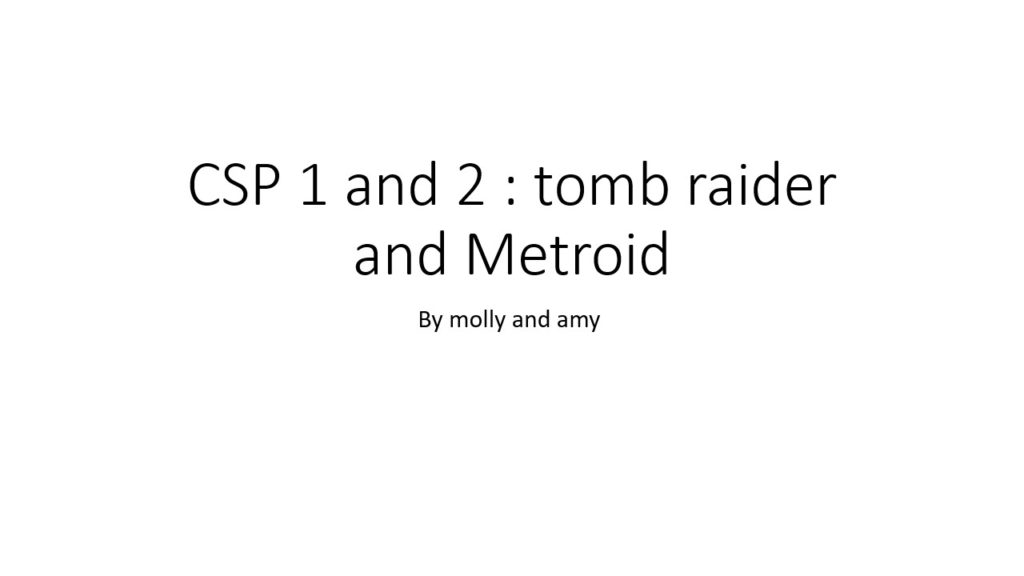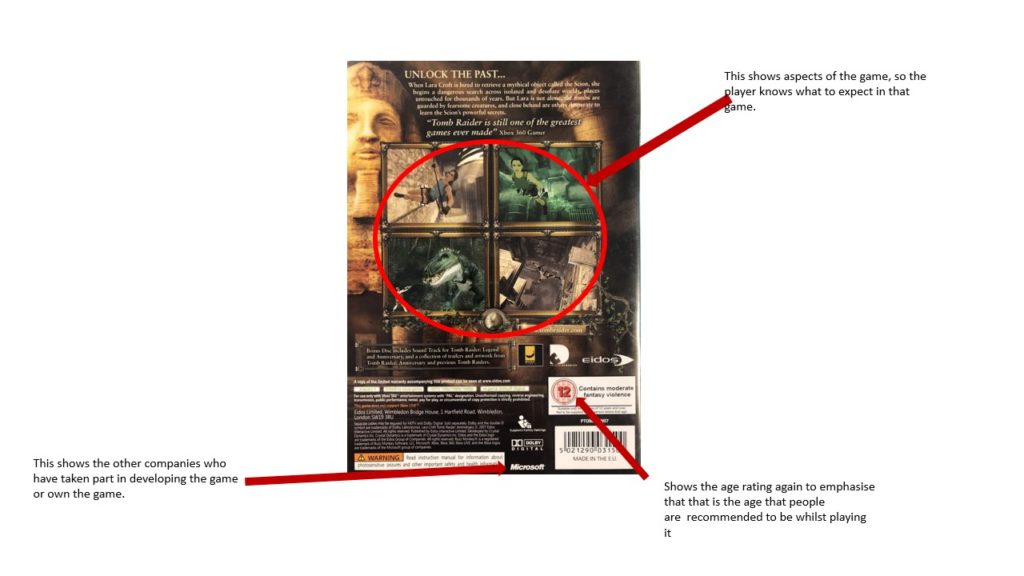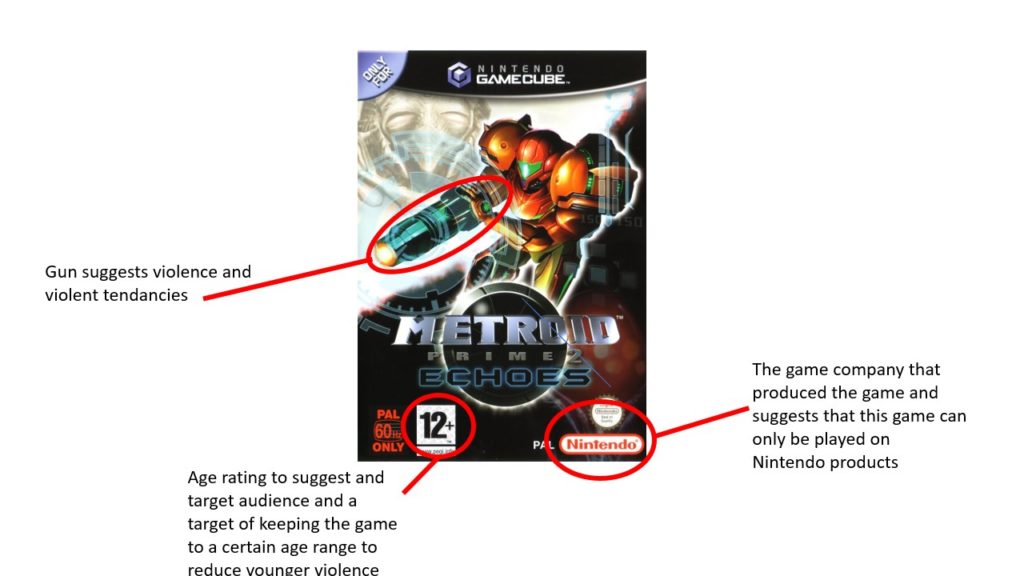In this essay I am going to apply a semiotic analysis to both the CSP 1 Tomb Raider and CSP 2 Metroid video games covers. In specific the relationship between the signifier and the signified (the thing/ idea being represented and the way the thing/ idea is expressed as a sign.
I will argue that CSP 1 Tomb Raider is both a very violent and highly sexualised which I feel doesn’t represent a female’s capability in a positive or productive way for the gaming world views them. The signifier (the thing being represented) in the game Tomb raider, which is about shooting, is successfully depicted by some of the signified media signs that include: the main dominant signifier and the paradigm of images on the back of the cover. Lara Croft (the main character) is an iconic sign as to what the game will be based around.
Firstly, the way in which the female is depicted on the front cover having tight fitted clothing clinging specifically to her rear emphasising the dominant ideology that women should have a big bum, setting unrealistic expectations (an example of negative stereotyping) right from the beginning, leading women into feeling like they have failed if they don’t appear to be like these figures which are considered desirable and the voyeurism that men will experience at this sight. However, this could also suggest she is less capable and more likely to get in danger due to not being able to protect herself (supported with the way in which she is holding the guns down by her side: not looking ready to battle) and so the reason as to why she might be the main dominant signifier on the front cover is, as shown in the feminist frequency videos about “damsel in distress”. Suggesting that a women’s main purpose in a game is to keep the plot going by the man needing to assist the woman.
Furthermore, in both games covers, CSP 1 Tomb Raider and CSP 2 Metroid, the link between the signifier (being what the game is about) and the signified (being the characters and setting) is very clear. There is use an effective use of bold text for the titles top draw attention to the main media sign of the game (the name of it) especially in the Tomb Raider cover the anchorage between the image and title is very good. The lighting in the background is drawn to the title but also the main image of the woman with guns showing how everything links in together. “Women then stands in patriarchal couture as signifier for the male other” – quote from Why Diversity Matters.
Despite all the negative judgements that can be made about the character in Tomb Raider this aspect of the cover is efficient in showing how a woman has power by the light being focussed on her. It is a good representation of in some way how the world is changing and trying to challenge The Male Gaze view (Laura Mulvey) in which women are objectified and sexualised which can lead to violence as proved in the article about feminism where it states “52% of Hispanic people studied believed there was a link between violent video games and real-world violence.”- Feminist Frequency site. Especially domestic violence which isn’t what the signified was trying to represent from the signifier.
It seems unfair that in CSP 2 Metroid, the dominant signifier is a fantasy male with a muscular build and lots of fighting gear to present how he is very well prepared which agrees with the typical stereotypes of males being strong and independent. This is prejudice because there is still a clear patriarchy which shouldn’t be allowed in this year. To add to the conveying idea there is also a transparent texture on the cover reflecting from the weapons, which indicates additional power and ability to actually work weapons compared to in Tomb Raider where the female is just holding the weapon down next to her thigh not looking as if she will actually know how to use it. But the guy in Metroid is stood in a firm position, strongly clenching on the gun and aiming it a specific point proving he is ready to shoot. Therefore, men are getting more of a supportive community with more recognition. Guantlett believes in the theory that you create your own identity through media inputs which would impact how men feel more forceful and women are shrunk into a smaller and less capable person due to the constructed identity.
Additionally, there is quite a strong use of hegemony in CSP 2 Metroid due to how there is no females to be seen on the front cover (this is an example of selective representation) implying they are significantly less important than the male characters. This could cause the audience of female gamers to have a lower self-esteem because they are influenced into believing they aren’t as worthy and as talented. In contrast this could also been seen as a positive because usually men are less likely to admit to their struggles so it might help them feel better about their selves. “the power of video games [is] a reflective, empowering and emotional influence on the lives of players”-Why diversity matters in the modern video games industry, Guardian, 18 July 2017
In conclusion I strongly believe that none of the games cover (neither Tomb Raider or Metroid) have a positive representation of the relationship between males and females. More specifically the possible dangers in which women can encounter due to the influences that video games try to convey to the user such as sexual violence and disempowering them. These examples from CSP 1 Tomb Raider and CSP 2 Metroid effectively back up the theories by Laura Mulvey about the male gaze and the Guardian’s report on the outstanding impact games have on everyone. I think that all games should try to use more countertypes which would create positive stereotypes giving a more realistic expectation of a group of people whether it be male or female or different races.








